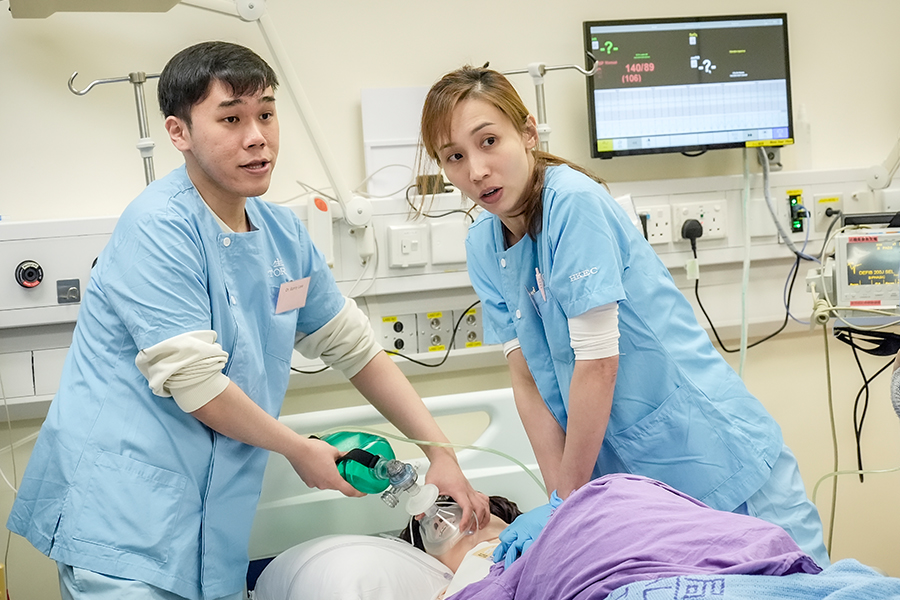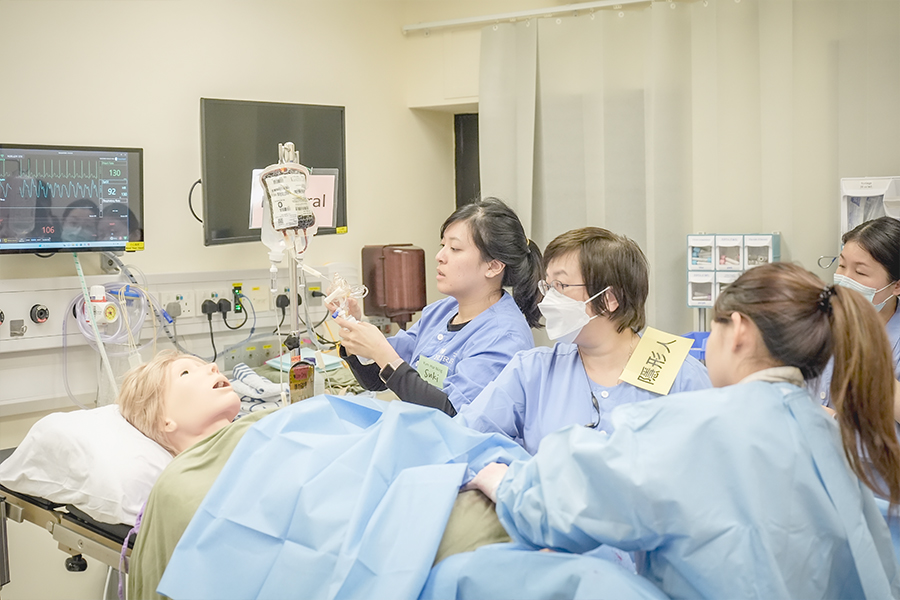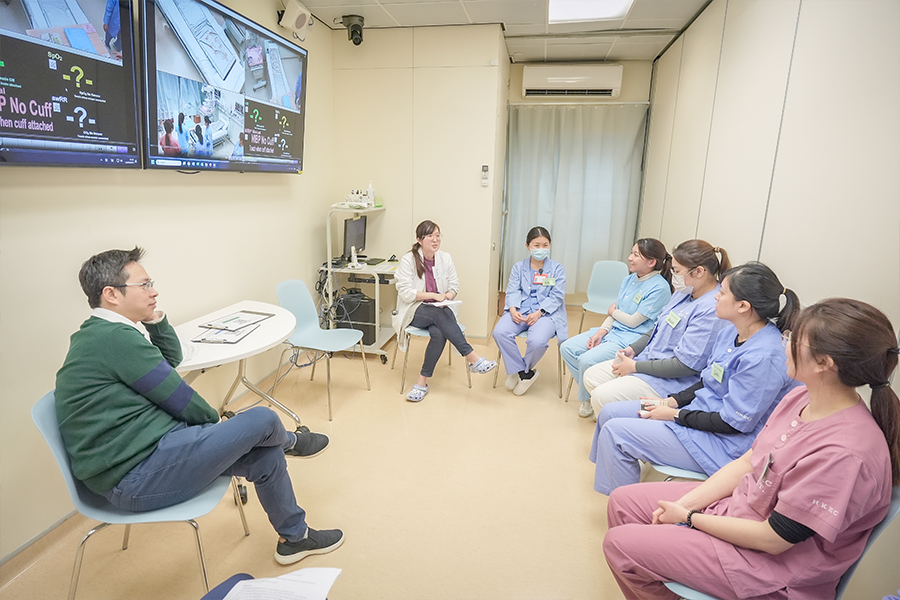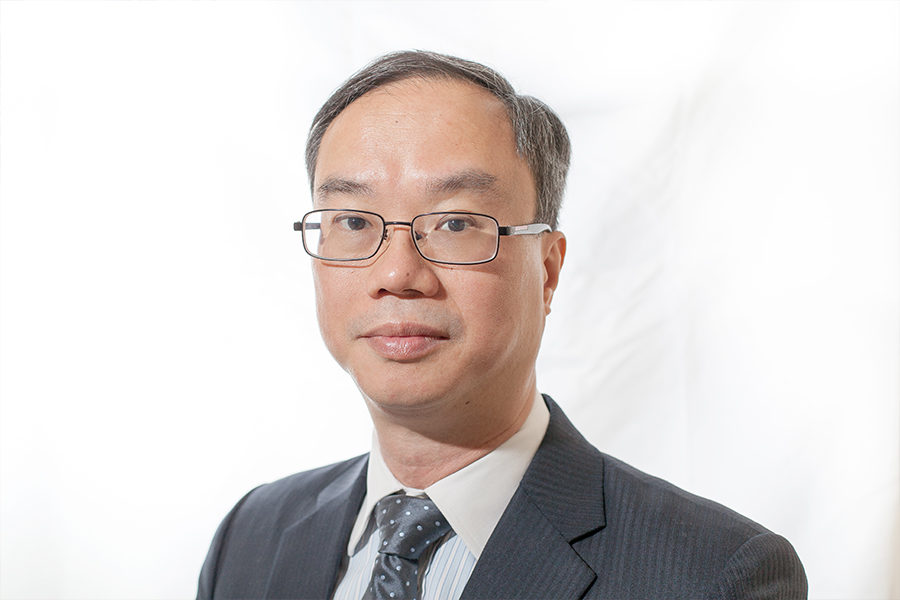Team-based simulation training promotes complementarity
 A critical scenario unfolds during a simulation training session at the Nethersole Clinical Simulation Training Centre (NCSTC): A pregnant woman suffered a sudden cardiac arrest, prompting the obstetrics team to perform cardiopulmonary resuscitation and a caesarean section to deliver the baby...... This scenario is part of a team-based simulation training involving healthcare professionals from the Obstetrics and Gynecology (O&G) Department at Pamela Youde Nethersole Eastern Hospital (PYNEH) and Queen Mary Hospital (QMH).
A critical scenario unfolds during a simulation training session at the Nethersole Clinical Simulation Training Centre (NCSTC): A pregnant woman suffered a sudden cardiac arrest, prompting the obstetrics team to perform cardiopulmonary resuscitation and a caesarean section to deliver the baby...... This scenario is part of a team-based simulation training involving healthcare professionals from the Obstetrics and Gynecology (O&G) Department at Pamela Youde Nethersole Eastern Hospital (PYNEH) and Queen Mary Hospital (QMH).
Dr Barry Law Ming-chak, Resident of the O&G Department at QMH, shares his thoughts after participating in the simulation training. “Simulation training provides a safe environment where we can practise handling rare but potentially life-threatening scenarios. The entire team, including senior and junior doctors, as well as midwives and nurses from the labour ward, prenatal ward, and postnatal ward, trains together, replicating real workplace conditions. This allows us to identify the communication gaps and refine our communication and team management skills.”

Transformed from real cases to strengthen communication skills
NCSTC is one of the 11 simulation training centres under HA. The above team-based simulation training forms part of its Crew Resource Management (CRM) programme. The centre transforms real medical cases into scenario-based simulation training, not only enhancing the ability of healthcare teams to handle sudden critical patients but also strengthening communication and collaboration skills among team members, ultimately improving patient safety and service quality.“The purpose of the training is not to hone individual techniques, but to foster teamwork and complementarity during the process, while establishing a ‘speak up’ culture. With patient safety as the top priority, we encourage team members to boldly voice concerns when they identify problems, thereby forging an expert team,” explains Dr Daniel Wong, Director of NCSTC. To meet the needs of healthcare services, the centre has increased the frequency of joint simulation training sessions involving different departments, hospitals, and even clusters. These simulating scenarios such as transferring a patient from the emergency room to a specialty ward or to another hospital, deepen cross-departmental and cross-cluster collaboration.

Innovative technology enhances technical skills development and experience transfer
In recent years, PYNEH has actively adopted innovative technology by establishing skills-based simulation training. The team utilises real medical imaging information combined with artificial intelligence to create highly realistic 3D-printed human models. “Young doctors undergoing specialty training can master surgical techniques using these models before applying them to patients, thereby enhancing patient safety,” Director of the Hong Kong East Cluster Training Centre for Healthcare Management & Clinical Technology Dr Pang Kai-yuen (below photo) says. The cluster is also exploring the use of HoloLens, a mixed reality device. Its eye-tracking function is used to record doctors’ gaze path during simulated surgeries. It aids in the transfer of surgical techniques and experience by comparing the gaze focus of senior and junior doctors. Following its establishment, HA Academy has strengthened ties with the 11 simulation training centres to collectively promote a culture of corporate learning. The academy collects and integrates training materials from each centre, then uploads them to its e-learning platform, with the initial phase focusing on integrating the CRM programme. Dr Pang hopes that, with HA Academy’s spearheading and support, all the centres can be linked together to achieve complementary and synergistic effects, jointly design training programmes that better meet the needs of frontline staff, and establish unified training standards, so as to elevate the overall level of training.
Following its establishment, HA Academy has strengthened ties with the 11 simulation training centres to collectively promote a culture of corporate learning. The academy collects and integrates training materials from each centre, then uploads them to its e-learning platform, with the initial phase focusing on integrating the CRM programme. Dr Pang hopes that, with HA Academy’s spearheading and support, all the centres can be linked together to achieve complementary and synergistic effects, jointly design training programmes that better meet the needs of frontline staff, and establish unified training standards, so as to elevate the overall level of training.